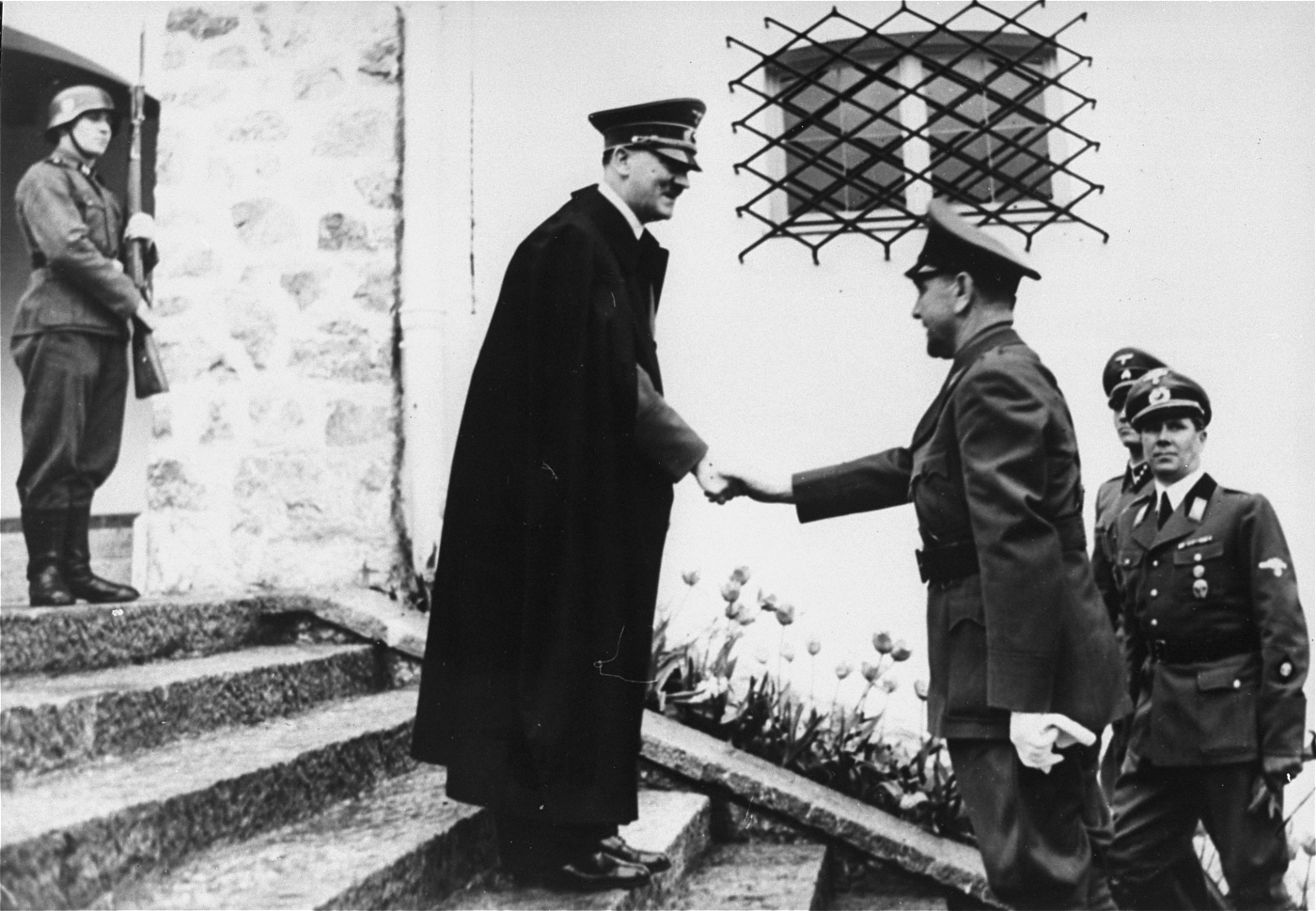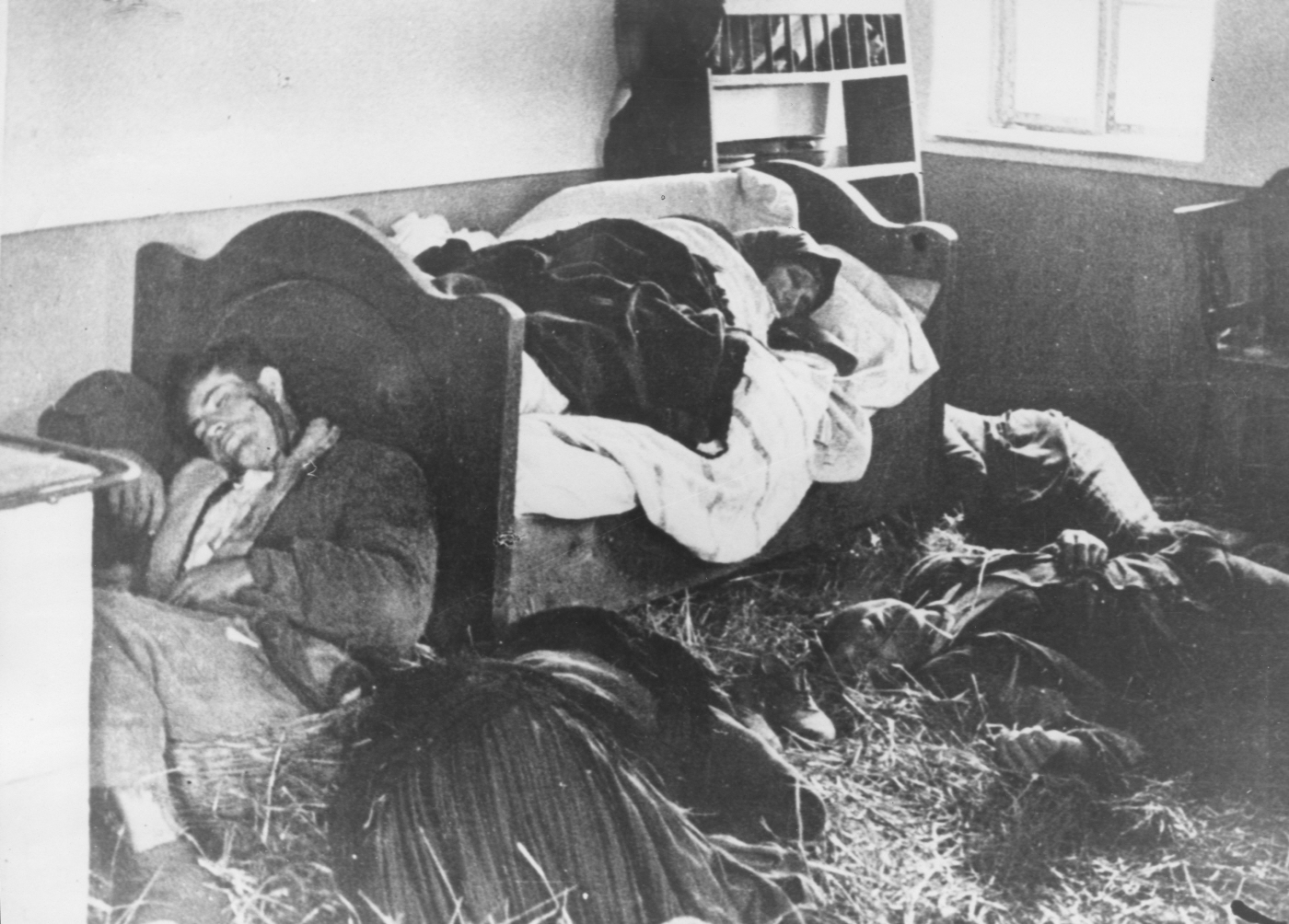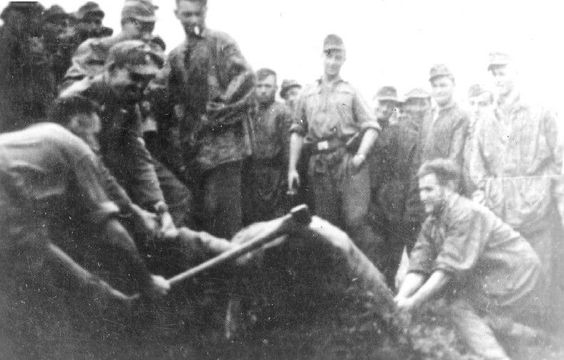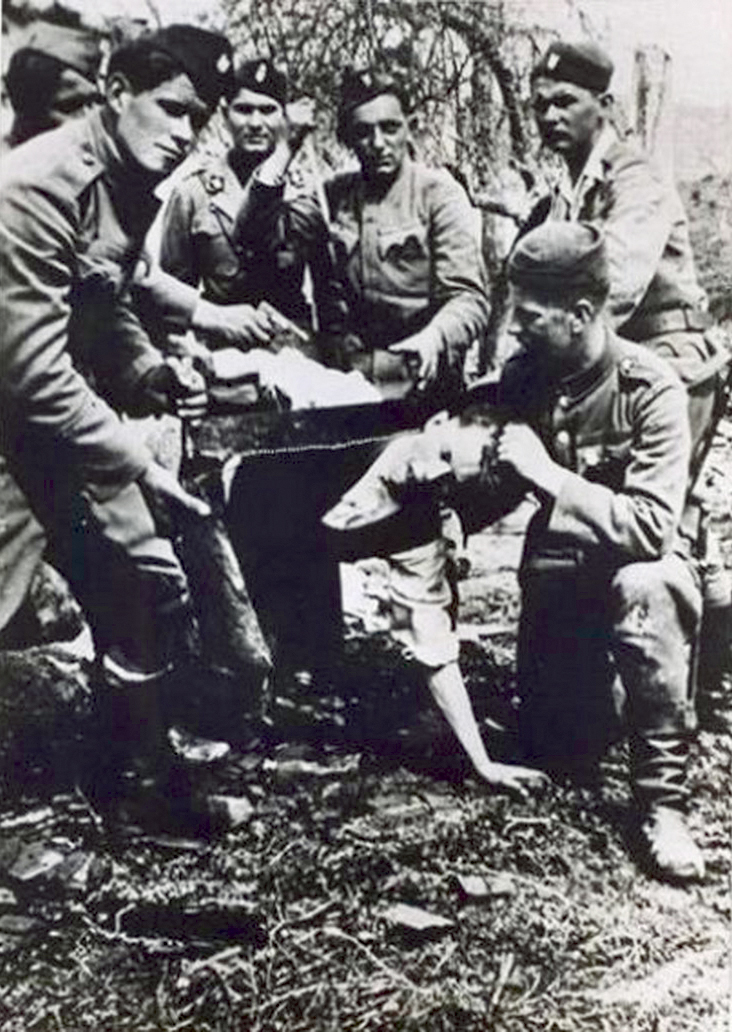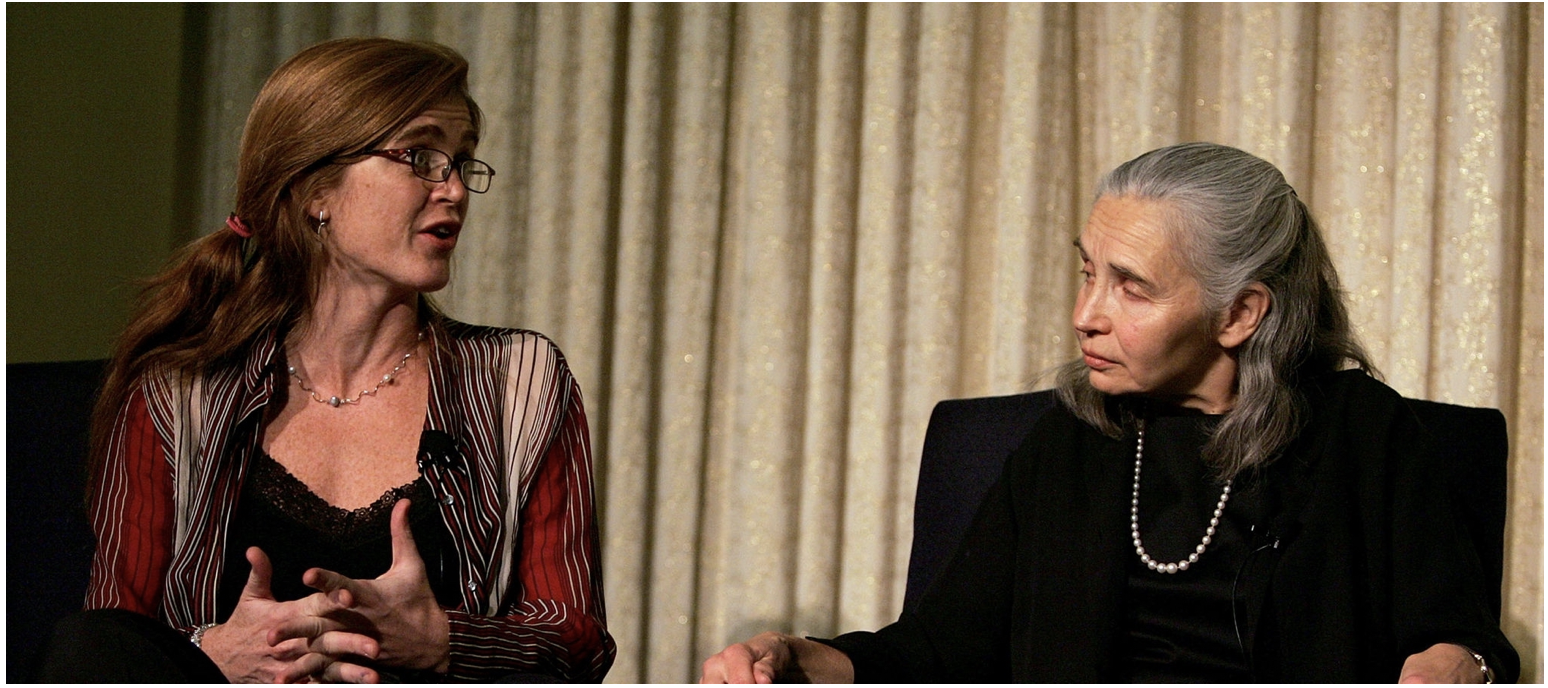Serbian WWII film smeared by war propagandists in Western media

BY MAX PARRY
 Eighty years ago last month, the Axis powers invaded the former Yugoslavia during the Second World War. A new Serbian film, Dara of Jasenovac, depicts the systematic extermination of Serbs which followed under the Nazi-puppet government of the Independent State of Croatia. Despite consultation with reputable historians during production and a screenplay based upon witness testimony, its release has generated controversy among international film critics. An examination of the English-speaking reception to the Serbian entry for the 93rd Academy Awards shows a boilerplate negative response and pseudo-journalistic pile-on that is part of an anti-Serb bias in Western media ever since the NATO war on Yugoslavia in the 1990s. Despite recent attempts at closer relations with the West, Serbophobia remains a fixture in corporate media on account of Belgrade’s strong historical ties with Moscow amid the New Cold War between the U.S. and Russia.
Eighty years ago last month, the Axis powers invaded the former Yugoslavia during the Second World War. A new Serbian film, Dara of Jasenovac, depicts the systematic extermination of Serbs which followed under the Nazi-puppet government of the Independent State of Croatia. Despite consultation with reputable historians during production and a screenplay based upon witness testimony, its release has generated controversy among international film critics. An examination of the English-speaking reception to the Serbian entry for the 93rd Academy Awards shows a boilerplate negative response and pseudo-journalistic pile-on that is part of an anti-Serb bias in Western media ever since the NATO war on Yugoslavia in the 1990s. Despite recent attempts at closer relations with the West, Serbophobia remains a fixture in corporate media on account of Belgrade’s strong historical ties with Moscow amid the New Cold War between the U.S. and Russia.
One such example was a recent article featured in the arts and culture website Hyperallergic contrasting Dara of Jasenovac with Quo Vadis, Aida? (“Where are you going, Aida?”), a recent Bosnian film recounting the infamous 1995 Srebrenica massacre. It is no accident that the Bosnian drama was nominated for Best International Feature Film at the Oscars and is widely promoted by popular streaming services while its Serbian competitor has not been as fortunate. Although the Hyperallergic piece (by a Bosnian writer) is slightly more sympathetic than previous scathing indictments in the Los Angeles Times and Variety magazine where the former smeared Dara of Jasenovac as “Serbian nationalist propaganda” and the latter even dared question the historical accuracy of its portrayal of the Ustaša regime, it follows the same lockstep formula. In fact, even the most favorable write-ups include qualifications that as a Serbian state production, although the film may be historically accurate, there must be a hidden agenda behind it.
What none of these yellow journalists bother to explain is how any Serbian film can faithfully portray WWII history, during which Serbs were disproportionate victims at the hands of their fellow countrymen in collaboration with the Axis invaders, without provoking such accusations of nativism. The trumped-up charge is that the filmic representation of atrocities committed by the Ustaša during WWII is to somehow excuse or legitimate war crimes carried out five decades later during the Yugoslav Wars (of which Serbs were assigned excessive blame), when this too proceeds from a false historical premise. The breakup of the former Yugoslavia resulted in ethnic cleansing on all sides, but killings perpetrated by Serbs were given inordinate attention just as comparable massacres by Croats, Bosniaks and Kosovar Albanians were minimized and underreported. Morever, the socialist government in Belgrade singled out for regime change by NATO wasn’t responsible for the acts of Serbs within Bosnia and Croatia. More than twenty years later, the censure of Dara of Jasenovac is still cherry-picking worthy from unworthy victims in the Balkans.
The hypocrisy of Western presstitutes could not be more clear than in their coverage of two films depicting two different historical conflicts in the same region where genocide is said to have been committed. Perhaps it is the fact that the vast majority of victims in Jasenovac happened to be four times as many Eastern Orthodox Serbs as Jews that this lesser known chapter of Axis war crimes is rarely shown on the silver screen. Or maybe the reason World War II in Yugoslavia is seldom depicted in Hollywood is the complicity of the Croatian Catholic clergy in the Ustaša regime’s crimes against humanity which Dara of Jasenovac details from the perspective of a ten-year old Serb girl. Even though the film is explicitly clear that it was Ustaše ultra-nationalists who committed barbaric killings of which many Croatians were also victims, Variety’s Jay Weissberg still smeared the film as “anti-Croatian and anti-Catholic.” Nevertheless, it should be noted such Anglophone bias against Serbian cinema is nothing new, as similar criticism was previously leveled against Emir Kusturica’s Underground, despite the epic comedy-drama taking home the Palme D’Or at Cannes Film Festival in 1995.
Meanwhile, Variety had nothing but praise for Quo Vadis, Aida? and its narrative of a Bosnian United Nations translator whose family perishes in the Srebrenica enclave at the hands of Bosnian Serbs, much less any scrutiny toward its historical veracity. In reality, what happened in Srebrenica was a retaliatory slaughter after equivalent war crimes by Bosniak Muslims against Serbs in neighboring villages. Nevermind that the slanderous claim of implicit nativism hurled at Dara of Jasenovac is much more applicable to its Bosnian cinematic counterpart where Serbs as a nationality are relentlessly demonized. But what can you expect from the yellow press of a country which just elected Joe Biden? The then-Senator from Delaware not only supported the NATO assault on Serbia but was previously quoted as saying,“We should go to Belgrade and have a Japanese-German style occupation of that country”, “Serbs are illiterate degenerates, baby killers, butchers and rapists” and “all Serbs should be placed in Nazi-style concentration camps.” The highway in Kosovo which leads to Camp Bondsteel, the U.S. army base occupying the NATO protectorate, is even named after the American president’s late son, Beau. Anti-Serb racism is normalized from the top down.
 Croatia was a fanatical ally of Nazi Germany before and during WW2, something that the Western media, politicians and cultural figures prefer to forget. The image depicts a Croatian soldier in German uniform. Western Ukrainians were also notorious for their collaboration. The new Nazi-protected Croatian state was keenly interested in ethnic and religious cleansing, thereby persecuting Jews, Christian Orthodox Serbs, and Roma. Croatia was a fanatical ally of Nazi Germany before and during WW2, something that the Western media, politicians and cultural figures prefer to forget. The image depicts a Croatian soldier in German uniform. Western Ukrainians were also notorious for their collaboration. The new Nazi-protected Croatian state was keenly interested in ethnic and religious cleansing, thereby persecuting Jews, Christian Orthodox Serbs, and Roma. |
BELOW: Members of the feared Ustashe, a Croatian far right formation that acted as a Fascist militia in Yugoslavia. Headed by Hitler admirer Ante Pavelic, they committed innumerable atrocities, especially against their ancestral enemies, the Serbs. Their behaviour was so brutal that German and Italian commanders had to intervene to hold them back.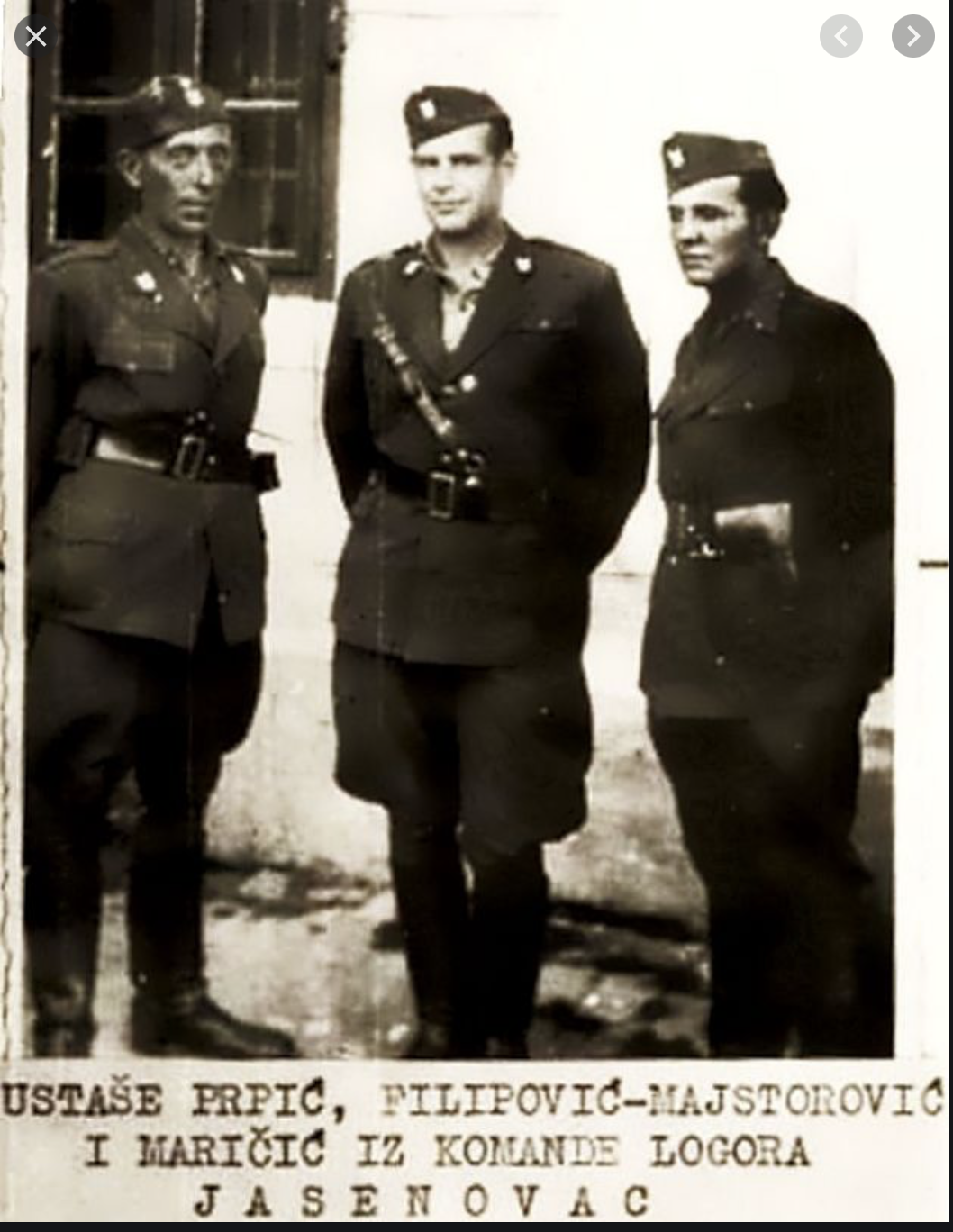 |
|||
|
A Gestapo report to Reichsführer SS Heinrich Himmler, dated 17 February 1942, stated:
|
THE WIKIPEDIA ENTRY FOR THE USTASHE NOTES THE FOLLOWING (keep in mind the Wikipedia is usually edited to comply with the Western imperialist narrative):
|
If ethnic cleansing was committed on every side in the Yugoslav Wars, then by definition what occurred was a civil war, not genocide. Coincidentally, another new release, the HBO docuseries Exterminate All the Brutes by Haitian director Raoul Peck (I Am Not Your Negro, The Young Karl Marx), explores the history of European colonialism where various large-scale destructions of entire peoples occurred long before the Polish-Jewish lawyer Raphael Lemkin devised the term and the United Nations adopted the Genocide Convention in 1948. Peck’s ambitious project starts strong with a brilliant rethinking of Nazi Germany as a settler colonial state, a refreshing antithesis to the conventional historical narrative established by theorists like Karl Popper and Hannah Arendt which typically equate the Third Reich with the Soviet Union and truncates fascism from the timeline of European colonialism. Or as Frantz Fanon wrote in The Wretched of the Earth, “what is fascism if not colonialism when rooted in a traditionally colonialist country?”
Unfortunately, Peck later undermines his own attempt at heterodoxy by toeing the line on the Rwandan genocide, citing a personal friend in American historian Alison Des Forges, a senior advisor at the highly politicized and Western-biased Human Rights Watch. The same NGO also played a key role in building the anti-Belgrade partiality during the Yugoslav Wars and is a perfect example of how so-called ‘non-governmental organizations’ often paradoxically enjoy close connections with Washington. Meanwhile, according to the late Edward S. Herman in his book Enduring Lies, Alison Des Forges was one of the leading spin doctors shaping the popular discourse on the Rwandan conflict and creating support for actual génocidaire Paul Kagame, now a widely acknowledged war criminal. Mr. Peck should know better, having previously made two films about Patrice Lumumba, the first democratically-elected Prime Minister of the Democratic Republic of the Congo overthrown in a 1961 CIA-backed coup, the same country which Kagame’s regime subsequently invaded and continued atrocities in the late 90s.
Peck then makes a race reductionist argument in determining the hypocritical reasons for the U.S. failure to prevent the bloody civil war where as many as a million Rwandans were killed while simultaneously launching a “humanitarian intervention” to ostensibly stop the same in Bosnia and Kosovo. While that may be partly true, would an incursion in Rwanda have been at all justifiable or desirable either? Never mind that the U.S. did intervene in covert operations aiding the assassination of Hutu President Juvenal Habyarimana whose plane was shot down in a probable ‘false flag’ operation by Kagame’s C.I.A.-backed Rwandan Patriotic Front (RPF), the very catalyst for the interethnic violence in the small African country. Like the disinformation during the Yugoslav Wars, the designation of the ethnic majority Hutus as sole aggressors and the Tutsi minority as pure victims was established in advance, even though both sides conducted pogroms.
Peck does not fully comprehend that ‘genocide’ itself has become a tool to justify the use of military force abroad on the basis of ending alleged human rights violations in countries targeted for regime change. On the one hand, the Haitian director does correctly observe that the invention of the phrase came a considerable time after the extermination of Native American indigenous peoples and the Atlantic slave trade where it is seldom applied. However, from its very inception following World War II there was an agenda behind its ratification and not just to give special status to Jewish victims of the Nazis above their inferior slavic and Romani fellow-sufferers so as to give grounds for genocidal Zionism in Palestine. Raphael Lemkin was also a Cold War hawk and peddled the Ukrainian nationalist propaganda and Hitlerite myth of the Holodomor (the real ‘holo-haux’) in order to slander the Soviets as genociders. From the get-go, the g-word was a political football for empire.

Ramsey Clark (L), who defended him before the ICC, shaking hands with Serbian leader Slobodan Milosevic.
Sadly, the world recently lost one man who did understand the way the notion of “genocide” has become an instrument of war and emptied of its meaning. Last month, former U.S. Attorney General during the Lyndon B. Johnson administration, Ramsey Clark, died at 93 years of age after a long and storied career from Washington insider to fierce critic of American foreign policy. While most know Clark for his role in the civil rights movement and the Great Society, the human rights lawyer spent his controversial later life as a peace activist and opponent of imperialism. In particular, he was one of the select few on the Western left (along with Michael Parenti, Edward S. Herman, John Pilger, Diana Johnstone, Harold Pinter, Peter Handke and others) brave enough to tell the truth about the war in Yugoslavia while also famously providing legal counsel to former Serbian President Slobodan Miloševiæ during his kangaroo trial in the Hague. At a time when most of the traditional anti-war “left” fell for the anti-Serb newspeak, Clark saw through the distortions used by NATO to justify its own carnage in Belgrade. With any luck, the left will follow his legacy and not gatekeepers who dress up war propaganda under the guise of championing human rights.
 Max Parry is an independent journalist and geopolitical analyst. His writing has appeared widely in alternative media. Max may be reached at maxrparry@live.com
Max Parry is an independent journalist and geopolitical analyst. His writing has appeared widely in alternative media. Max may be reached at maxrparry@live.com Don’t forget to sign up for our FREE bulletin. Get The Greanville Post in your mailbox every few days.
[newsletter_form]
[premium_newsticker id=”211406″]
The views expressed in this article are solely those of the author and may or may not reflect those of The Greanville Post
